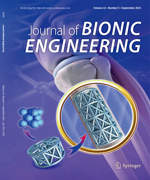When developing a humanoid myo-control hand, not only the mechanical structure should be considered to afford a high dexterity, but also the myoelectric (electromyography, EMG) control capability should be taken into account to fully accomplish the actuation tasks. This paper presents a novel humanoid robotic myocontrol hand (AR hand III) which adopted an underac-tuated mechanism and a forearm myocontrol EMG method. The AR hand III has five fingers and 15 joints, and actuated by three embedded motors. Underactuation can be found within each finger and between the rest three fingers (the middle finger, the ring finger and the little finger) when the hand is grasping objects. For the EMG control, two specific methods are proposed: the three-fingered hand gesture configuration of the AR hand III and a pattern classification method of EMG signals based on a statistical learning algorithm – Support Vector Machine (SVM). Eighteen active hand gestures of a testee are recognized ef-fectively, which can be directly mapped into the motions of AR hand III. An on-line EMG control scheme is established based on two different decision functions: one is for the discrimination between the idle and active modes, the other is for the recog-nition of the active modes. As a result, the AR hand III can swiftly follow the gesture instructions of the testee with a time delay less than 100 ms.

 Table of Content
Table of Content
 Table of Content
Table of Content